
Younge Khachab Rinpoche is a highly accomplished Mahamudra and Dzogchen master and a non-sectarian, or Rime, scholar. His training represents the Rime philosophical tradition, incorporating the view and meditation of the four main schools in Tibetan Buddhism. He believes in the transmission of the uncompromised, pure teachings of the oral and textual lineages.
Rinpoche is acknowledged as a traditional master of the Mahamudra and Dzogchen practices. He received all signs of accomplishment in the Six Yogas of Naropa, particularly Tsa Lung and Dream Yoga. He is fully able to transmit all stages of the Vajrayana path. He has studied widely with the top masters in the Kagyu, Nyingma, Gelug, Sakya and Bön traditions and he is known in India and Nepal for his vast knowledge of the Rime tradition.
Rinpoche’s style of teaching is direct, warm and engaging, extensive yet practical. He is accessible to his students and takes a personal interest in his student’s progress.
The previous Khachab Rinpoche was a renowned practitioner of the Six Yogas of Naropa, in particular tummo, as well as a Dzogchen master who displayed remarkable achievements during his lifetime, including remembering his past seven lives and etching “OM AH HUNG” into the solid rock of Mt. Kailash. Notably, a crow once gifted him a diamond, which his brother still treasures at his monastery in Northern Tibet.

Khachab Rinpoche’s mother was from the Bonpo Shu Tsang clan, rooted in ancient ties with the Nyingma and Bon traditions through the Mongolian royal lineage. As a dedicated disciple, she studied under Loppon Tenzin Namdak.
Rinpoche is the lineage holder for a significant family practice lineage that traces its history back to the eminent Dharma prince Mutri Tsenpo, and has had close ties with the Karmapas for centuries. Eminent figures from the family lineage (Tib. lubsey tsang) include Terton Younge Migyur Dorje, renowned for discovering significant texts that are still central to the Karma Kagyu lineage, including the Sadhana Cycle of the Three Roots of Dorje Drolo, Padmavajra Shitro, the Guru Yoga of Karma Pakshi, and many other ancillary practices. The Younge family’s terma lineage is guarded by a special protector – a manifestation of Mahakala atop a black horse.
Upon Khachab Rinpoche’s birth, his father dreamt of a yogi on a white elephant declaring his identity as “Khachab Rinpoche”. Over time, his father consistently had dreams of dragons whenever Rinpoche approached home, viewing them as significant omens.
The previous Khachab Rinpoche was a renowned practitioner of the Six Yogas of Naropa, in particular tummo, as well as a Dzogchen master who displayed remarkable achievements during his lifetime, including remembering his past seven lives and etching “OM AH HUNG” into the solid rock of Mt. Kailash. Notably, a crow once gifted him a diamond, which his brother still treasures at his monastery in Northern Tibet.

Rinpoche is the lineage holder for a significant family practice lineage that traces its history back to the eminent Dharma prince Mutri Tsenpo, and has had close ties with the Karmapas for centuries. Eminent figures from the family lineage (Tib. lubsey tsang) include Terton Younge Migyur Dorje, renowned for discovering significant texts that are still central to the Karma Kagyu lineage, including the Sadhana Cycle of the Three Roots of Dorje Drolo, Padmavajra Shitro, the Guru Yoga of Karma Pakshi, and many other ancillary practices. The Younge family’s terma lineage is guarded by a special protector – a manifestation of Mahakala atop a black horse.
Upon Khachab Rinpoche’s birth, his father dreamt of a yogi on a white elephant declaring his identity as “Khachab Rinpoche”. Over time, his father consistently had dreams of dragons whenever Rinpoche approached home, viewing them as significant omens.
Khachab Rinpoche’s mother was from the Bonpo Shu Tsang clan, rooted in ancient ties with the Nyingma and Bon traditions through the Mongolian royal lineage. As a dedicated disciple, she studied under Loppon Tenzin Namdak.
Before he passed away, the previous Khachab Rinpoche told his father that he would come to his house. His father didn’t pay attention to that message, but continued to uphold the lineage. In 1997, his father told Penor Rinpoche about the signs while he was at retreat at Pharping. Penor Rinpoche recognized Rinpoche as the second incarnation, and Shamar Rinpoche supported his recognition.
At the age of thirteen, Rinpoche was ordained by the 16th Gyalwa Karmapa and began his study within the Karma Kagyu Lineage at the Dilyak Monastery in Boudha. Dabzang Rinpoche was his main lama that he studied with at that monastery. In 1975, he took his novice monk vows, received the Kagyu Ngak Dzod empowerments with the Karmapa, as well as the Dudjom Tersar from Dudjom Rinpoche. Rinpoche had a lot of family connections with 16th Karmapa, which was his parents’ root lama.
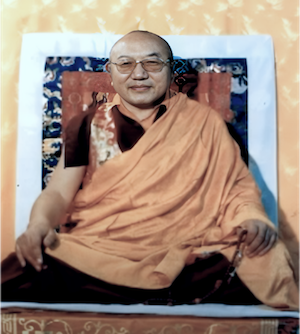
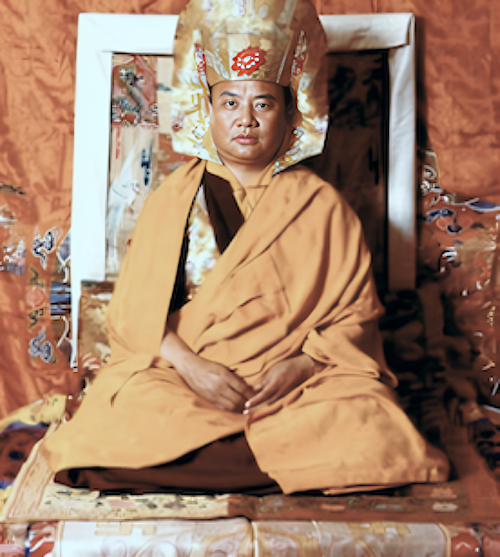
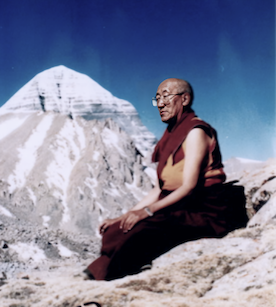
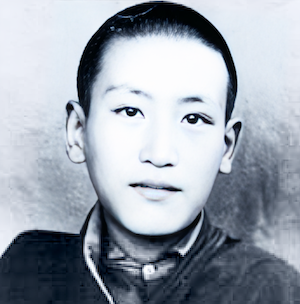
From his class at Ganden, only sixty endured the rigorous training to its culmination in 1989. Rinpoche’s main focus during this time was studying Buddhist logic and Middle Way philosophy. He received and maintained the Tsongkhapa Guhyasamaja lineage teachings, as well as mastering Je Tsonkhapa’s intricate work, “Essence of True Eloquence,” earning him the esteemed title of Geshe Uma Rabjampa.
At age fifteen, he left for Ganden Jangtse, the Gelug University in South India to begin his distinguished academic pursuit, obtaining the title of Geshe in Madhyamaka philosophy under the direction of Ganden Trichen Jamphel Shenphen.

Before he passed away, the previous Khachab Rinpoche told his father that he would come to his house. His father didn’t pay attention to that message, but continued to uphold the lineage. In 1997, his father told Penor Rinpoche about the signs while he was at retreat at Pharping. Penor Rinpoche recognized Rinpoche as the second incarnation, and Shamar Rinpoche supported his recognition.
At the age of thirteen, Rinpoche was ordained by the 16th Gyalwa Karmapa and began his study within the Karma Kagyu Lineage at the Dilyak Monastery in Boudha. Dabzang Rinpoche was his main lama that he studied with at that monastery. In 1975, he took his novice monk vows, received the Kagyu Ngak Dzod empowerments with the Karmapa, as well as the Dudjom Tersar from Dudjom Rinpoche. Rinpoche had a lot of family connections with 16th Karmapa, which was his parents’ root lama.




At age fifteen, he left for Ganden Jangtse, the Gelug University in South India to begin his distinguished academic pursuit, obtaining the title of Geshe in Madhyamaka philosophy under the direction of Ganden Trichen Jamphel Shenphen.
From his class at Ganden, only sixty endured the rigorous training to its culmination in 1989. Rinpoche’s main focus during this time was studying Buddhist logic and Middle Way philosophy. He received and maintained the Tsongkhapa Guhyasamaja lineage teachings, as well as mastering Je Tsonkhapa’s intricate work, “Essence of True Eloquence,” earning him the esteemed title of Geshe Uma Rabjampa.

After the retreat he received an invitation to teach at Thagten Nyingje Ling monastery in Nepal, where he stayed for several years. Rinpoche became a Khenpo at the Kagyu Thagten Nyingje Ling Monastery and is revered as the first Khenpo at the monastery.
During this time he received further Mahamudra clarifications with the Drikung Drubwang Rinpoche and stayed in retreat for four months under his personal direction in Dehradun, India. Afterwards, inspired by the great realized masters who followed the Rime path, Rinpoche went on to pursue the Nyingma and Bön practice of Dzogchen.
Recognized for his expertise in the Rime philosophical tradition, Rinpoche is a notable figure in the study of Mahamudra and Dzogchen practices. An authority in Tantra and Dzogchen, Khachab Rinpoche interweaves teachings from Tibet’s primary Buddhist schools. His depth in the Mahamudra and Dzogchen practices, particularly Tsa Lung and Dream Yoga, and titles of Geshe and Khenpo, reflect his profound knowledge and experience of these practice traditions.
Upon Khachab Rinpoche’s birth, his father dreamt of a yogi on a white elephant declaring his identity as “Khachab Rinpoche”. Over time, his father consistently had dreams of dragons whenever Rinpoche approached home, viewing them as significant omens.
After the retreat he received an invitation to teach at Thagten Nyingje Ling monastery in Nepal, where he stayed for several years. Rinpoche became a Khenpo at the Kagyu Thagten Nyingje Ling Monastery and is revered as the first Khenpo at the monastery.
During this time he received further Mahamudra clarifications with the Drikung Drubwang Rinpoche and stayed in retreat for four months under his personal direction in Dehradun, India. Afterwards, inspired by the great realized masters who followed the Rime path, Rinpoche went on to pursue the Nyingma and Bön practice of Dzogchen.
Recognized for his expertise in the Rime philosophical tradition, Rinpoche is a notable figure in the study of Mahamudra and Dzogchen practices. An authority in Tantra and Dzogchen, Khachab Rinpoche interweaves teachings from Tibet’s primary Buddhist schools. His depth in the Mahamudra and Dzogchen practices, particularly Tsa Lung and Dream Yoga, and titles of Geshe and Khenpo, reflect his profound knowledge and experience of these practice traditions.
Upon Khachab Rinpoche’s birth, his father dreamt of a yogi on a white elephant declaring his identity as “Khachab Rinpoche”. Over time, his father consistently had dreams of dragons whenever Rinpoche approached home, viewing them as significant omens.
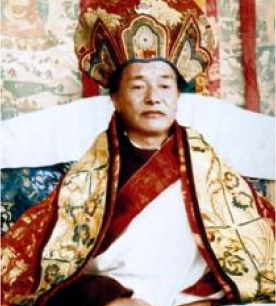


His Dzogchen root guru was the hidden yogi Dingri Khenchen who lived his whole life in isolated retreat.
In the Sakya lineage he received teachings from H.H. Chobgyed Trichen Rinpoche and Sakya Trizin.
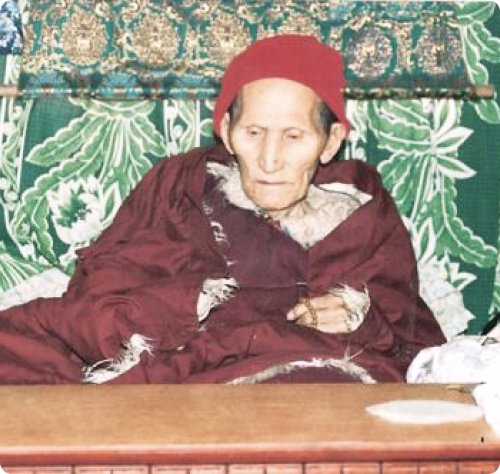


In the Drikung Kagyu lineage, he received teachings from Drubwang Chetsang Rinpoche and Drubwang Rinpoche.
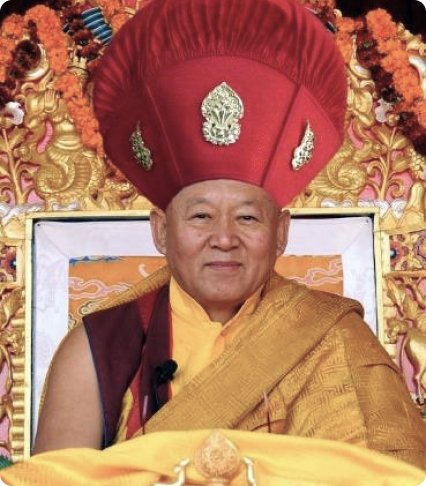
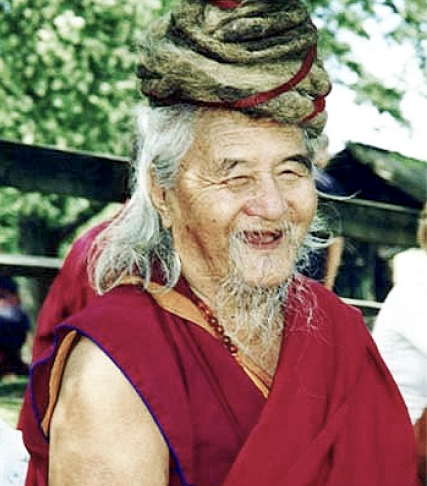
In the Gelug lineage, his teachers include HH Dalai Lama, 98th Ganden Tripa Jampal Zhenphen, Serkong Tsenzhab Rinpoche, Gyurme Khyentse Rinpoche, and Lobzang Ngakwang.

In 1998 H.H. Dalai Lama invited him for an interview and philosophical discussion. After being introduced and quizzed by His Holiness his interview extended for nearly an hour due to the delight and satisfaction of His Holiness.

He also studied the Bon Dzogchen tradition with Loppon Tenzin Namdak Rinpoche.
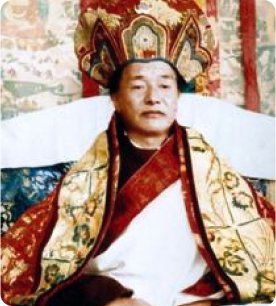



His Dzogchen root guru was the hidden yogi Dingri Khenchen who lived his whole life in isolated retreat.
In the Sakya lineage he received teachings from H.H. Chobgyed Trichen Rinpoche and Sakya Trizin.


In the Drikung Kagyu lineage, he received teachings from Drubwang Chetsang Rinpoche and Drubwang Rinpoche.



In the Gelug lineage, his teachers include HH Dalai Lama, 98th Ganden Tripa Jampal Zhenphen, Serkong Tsenzhab Rinpoche, Gyurme Khyentse Rinpoche, and Lobzang Ngakwang.
He also studied the Bon Dzogchen tradition with Loppon Tenzin Namdak Rinpoche.

In 1998 H.H. Dalai Lama invited him for an interview and philosophical discussion. After being introduced and quizzed by His Holiness his interview extended for nearly an hour due to the delight and satisfaction of His Holiness.
Rinpoche currently spends his time living in Seattle, WA and Gangtok, Sikkim and offers teachings to a global Sangha.
Subscribe to our Newsletter for Events, teachings & More!
By subscribing you agree to with our Privacy Policy and provide consent to receive updates from our company.